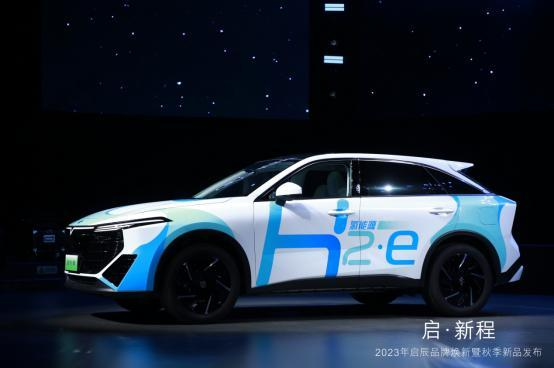Dongfeng Nissan Venucia’s first FCV model to go into commercial pilot operation in Jan. 2024
Shanghai (ZXZC)- Venucia, a brand under Dongfeng Nissan, revealed this week its first hydrogen-powered fuel cell vehicle (FCV) model, the Venucia V-online Qing Jing (translating to "hydrogen realm"), is set to be put into commercialized pilot operations in Huadu district, Guangzhou city from January 2024, spanning a period of 35 months.

The Venucia V-online Qing Jing; photo credit: Dongfeng Motor
During the commercial demonstration period, the Venucia V-online Qing Jing will provide environmentally friendly, efficient, and secure travel services to government agencies, businesses, and communities in Guangzhou's Huadu district through shuttle services and official vehicle use. Dongfeng Motor will oversee the hydrogen refueling and after-sales services during the operational phase, ensuring the stability and reliability of the vehicles.
The FCV model hit the market in early October at a price of 998,800 yuan. It distinguishes itself from the Venucia V-online DD-i with a slightly smaller length and height. Notably, its front end features large mesh ventilation openings on either side, enhancing combustion efficiency. The vehicle is identified as a hydrogen-powered model by the "氢舟H2·e" emblem added to the rear.
The Venucia V-online Qing Jing only takes 5 minutes to fill up with hydrogen, virtually eliminating any waiting time for recharging. Employing a hydrogen-electric dual-drive system, the model can achieve a range of up to 500 km with its battery fully charged and hydrogen tank topped up. In terms of its control system, it is equipped with a hydrogen-electric hybrid intelligent control system, enabling seamless transitions under various driving conditions and maintaining low energy consumption across all road scenarios. With this technology, the vehicle can cover 120 km per kilogram of hydrogen.

